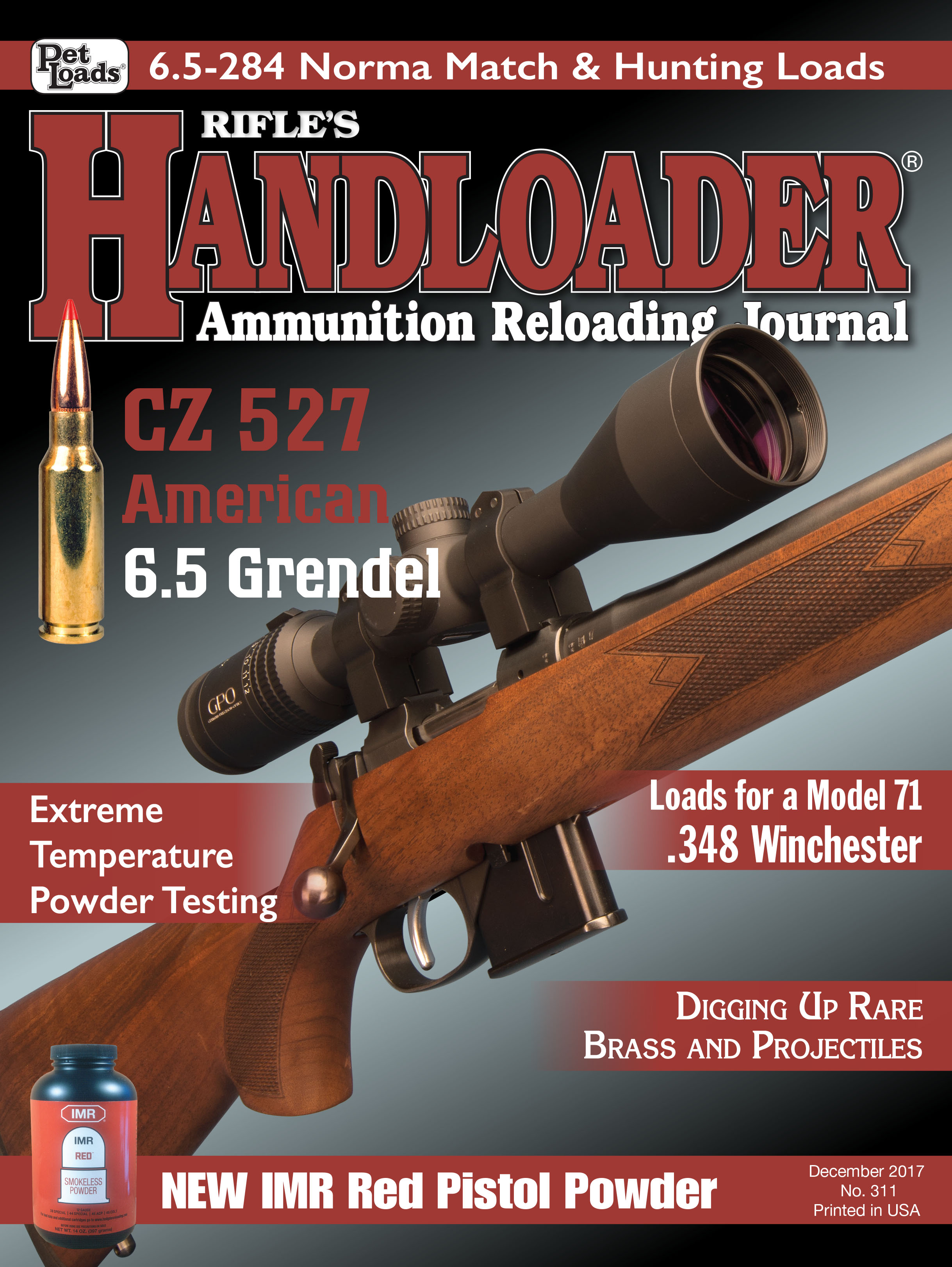Bullets & Brass
Colt Offical Police .38-44 Loads
column By: Brian Pearce | December, 17
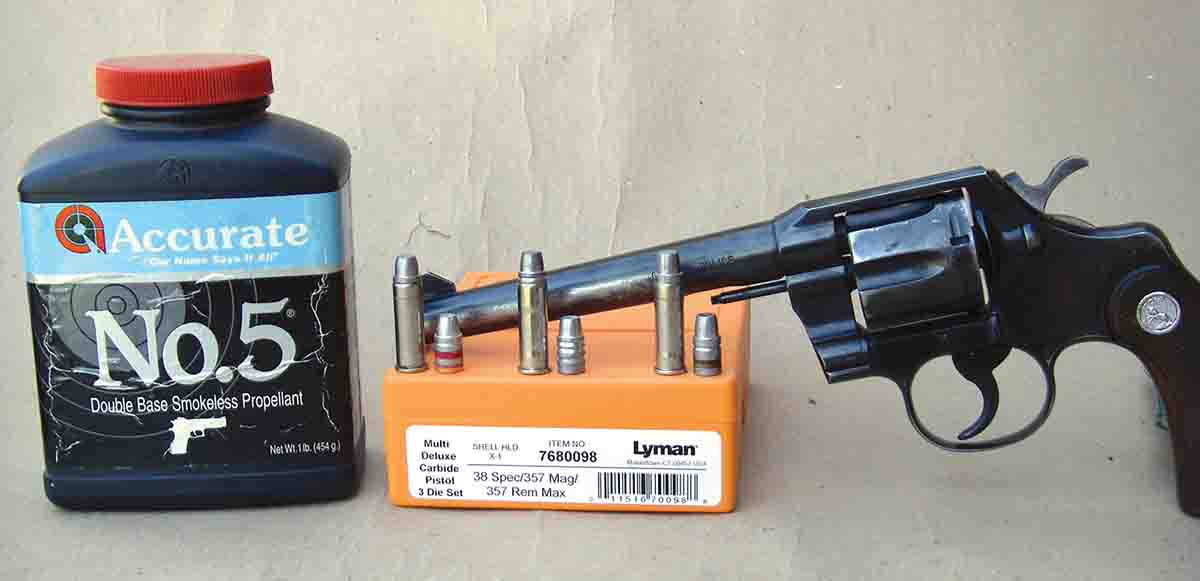
A: Colt did indeed recommend the original Official Police (pre-World War II version, produced from 1927 to 1946) as well as the postwar version (1947 to 1969) for use with .38-44 factory loads.
Regarding the post-World War II Smith & Wesson Model 10; I would not recommend that revolver (and neither does Smith & Wesson) for use with .38-44 loads. It is fine for use with +P data that is established at 20,000 psi, but those loads are generating less pressure than original .38-44 loads.
For the record, Smith & Wesson conducted a considerable amount of testing with different steels and heat-treating methods to get the Model 13 and Model 19, with its adjustable sights, to accept the .357 Magnum cartridge. In other words, the frames used on K-frame .357 Magnum revolvers are indeed different than those used on most K-frame .38 Special revolvers. As a side note, Smith & Wesson limited .38-44 ammunition performance and pressures so that when these comparatively warm loads found their way into the chambers of a K-frame revolver, they would not destroy it. Again, I do not recommend (and neither does Smith & Wesson) the use of .38-44 loads in K-frame .38 Special revolvers.
Incidentally, Colt eventually developed I-frame revolvers, such as the Python, Colt .357 and Trooper, to accept the .357 Magnum, which is the same basic frame as used on your Official Police. However, they too had small engineering changes, along with increased tensile steel strength. The point is that you should never use data that develops similar pressures as the .357 Magnum in your Official Police.
Regarding .38-44 handloading data, much available data (including mine) often exceeds the pressures and velocities of original factory loads, for which there were no industry-standardized pressures. Such loads are intended specifically for Smith & Wesson N-frame and Colt Single Action Army revolvers, or guns of similar strength. I would suggest that any data you use in your Colt Official Police should not exceed 1,100 fps when using a 158-grain bullet, which will develop similar pressures as vintage .38-44 factory loads.
Incidentally, in Handloader No. 304 (Oct/Nov 2016), I updated .38 Special +P loads and offered additional data for the .38-44 in a “Pet Loads” feature, which might be helpful to you.
.218 Bee Components
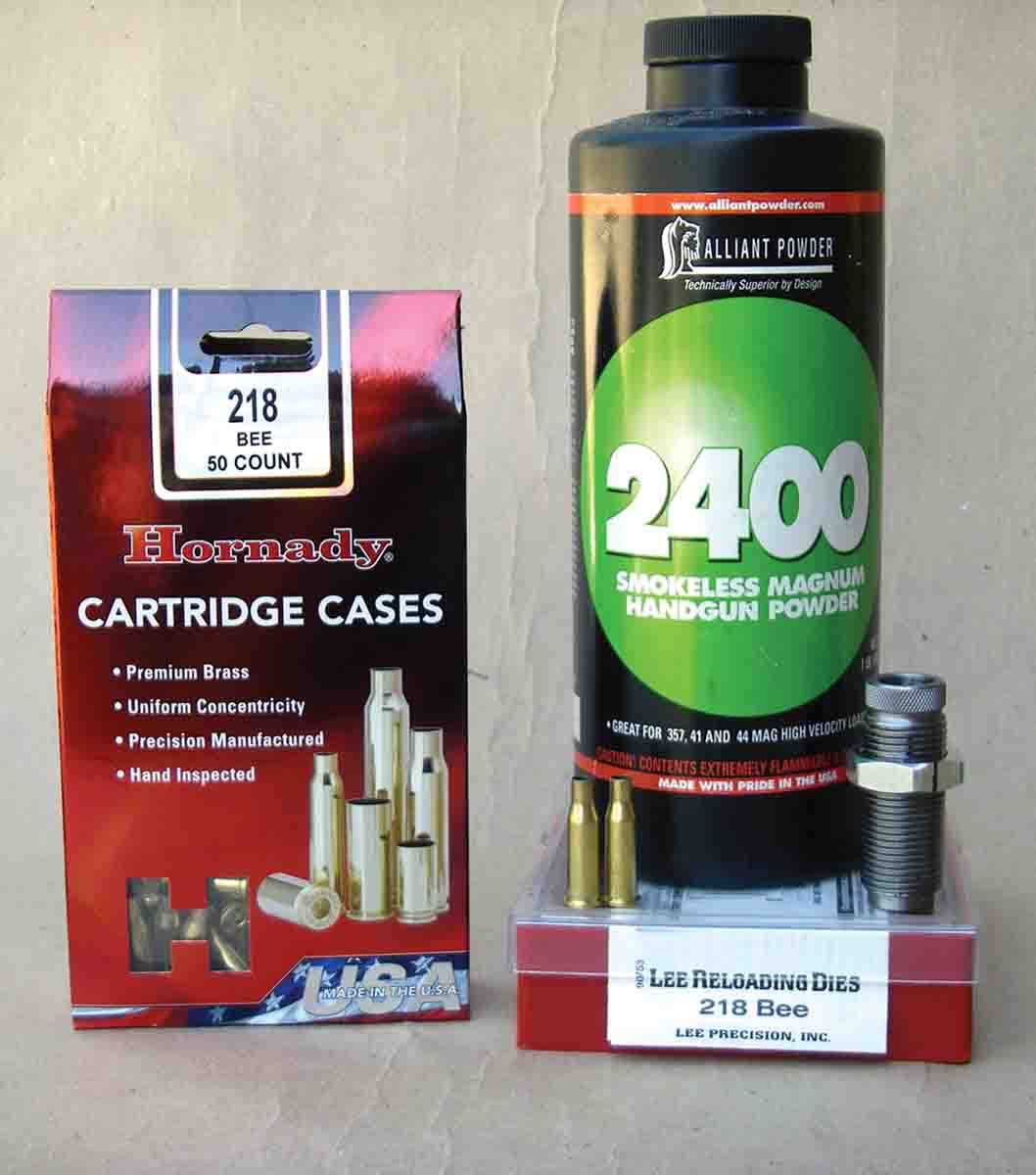
I finally located and purchased new Hornady cases and am now ready to begin loading. I still have a quantity of the Speer 45-grain flatnose bullets on hand. In years past, before my old brass became tired and began splitting, I used Alliant Reloder 7 powder. My supply is mostly used up now, which takes me to the question that I have for you: What powder and charge weight would you suggest that will duplicate factory loads and is likely to be the most accurate? Thanks in advance for your insight. – T.S., via e-mail
A: A single, most accurate powder and charge weight is often requested but is extremely difficult to provide, as there are so many variables that can change the results. With that thought in mind, I suggest trying between 11.0 and 11.2 grains of Alliant 2400 powder, which should produce velocities between 2,790 and 2,815 fps. I also recommend crimping cases with a Lee Factory Crimp Die, so the crimp can be applied gently to this rather thin case without damage but still results in enough bullet pull to aid powder ignition while also preventing bullets from becoming deeply seated when pushed into the tubular magazine of leverguns. The industry generally uses small rifle primers with this cartridge, but a handloader can usually lower extreme spreads, and therefore improve accuracy, by using a small pistol standard primer such as the Federal No. 100 or CCI 500, both of which are designed to handle up to 40,000 CUP pressure, which is the industry maximum average for this cartridge.
Magnum Primers for the .357
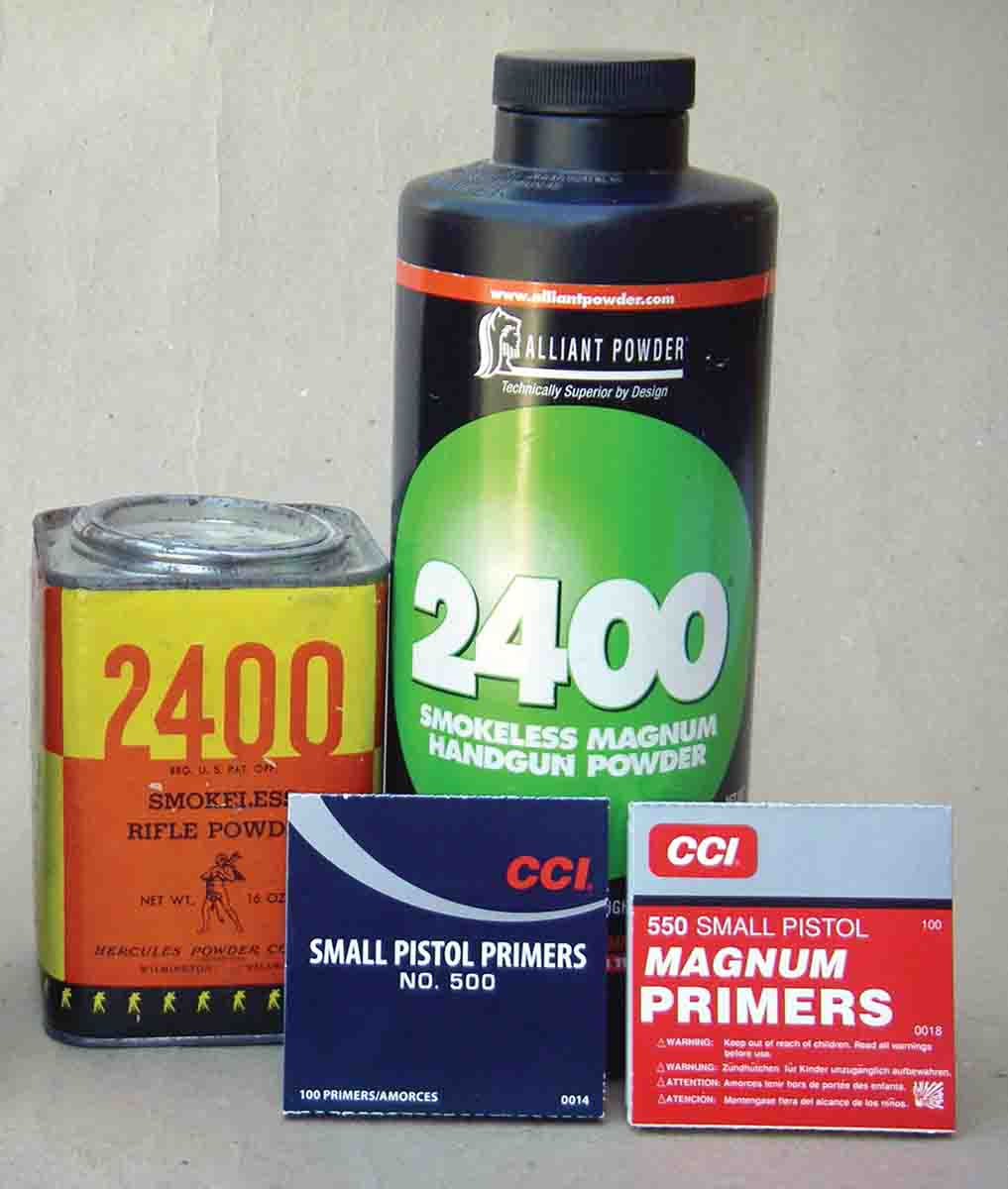
A: When Hercules 2400 (now Alliant) was first introduced in 1932, it was almost immediately put to use for heavy handloads in sixgun cartridges, including .38 Special, .44 Special, .45 Colt and others, and by 1935 it was used in factory-loaded .357 Magnum ammunition. At the time there were no magnum revolver primers. Magnum primers for revolver cartridges first appeared with the introduction of sometimes hard-to-ignite spherical powders that were first used by factories in their offerings for magnum revolver cartridges and later offered as a component to handloaders. This is when the problems began.
The average handloader often surmises that if he is shooting a magnum revolver, he needs “magnum” primers regardless of the powder or load selected. I am aware of several laboratories that have conducted specific tests with 2400 powder, comparing magnum and standard primers: H.P. White Laboratory, Hercules, Speer, Alliant and others including me. The results have varied slightly, but each concluded that 2400 produced notably larger extreme spreads and greater pressures when ignited with magnum primers. Some reports establish that there was between a 20 and 22 percent pressure increase when changing from standard to magnum primers, which even varies depending on primer manufacturer and lot number. In other words, a sixgun load that has been pressure tested using standard primers, and is within industry pressure guidelines, can actually exceed pressure limits by substituting a magnum primer, and the shooter will probably never know it.
More evidence of this can be seen in the Speer Reloading Manual Nos. 12 and 13. When these manuals appeared, I noticed that 2400 powder loads for the .357 and .44 Magnums were ignited with magnum primers, and their performance levels fell behind other powders due to pressure limits. I contacted my old friend Alan Jones, the Speer Manual’s editor, and pointed out that Hercules and later Alliant never recommended the use of magnum primers with this powder and suggested that Speer reshoot the data with standard primers. Accuracy improved, and 2400 became a top-performing powder in both cartridges. That data was published in Speer Reloading Manual No. 14 with the notation: “Do not use magnum primers with the 2400 and Vihtavuori N110 loads shown here or high pressures will result.”
Oregon Trail Bullets (www.laser-cast.com) lists a 180-grain FP, rather than the 190 grain you mention. I would encourage you to try your loads with standard primers, which is certain to lower extreme spreads and pressure, and will probably improve accuracy.
Long-Range .308 Loads
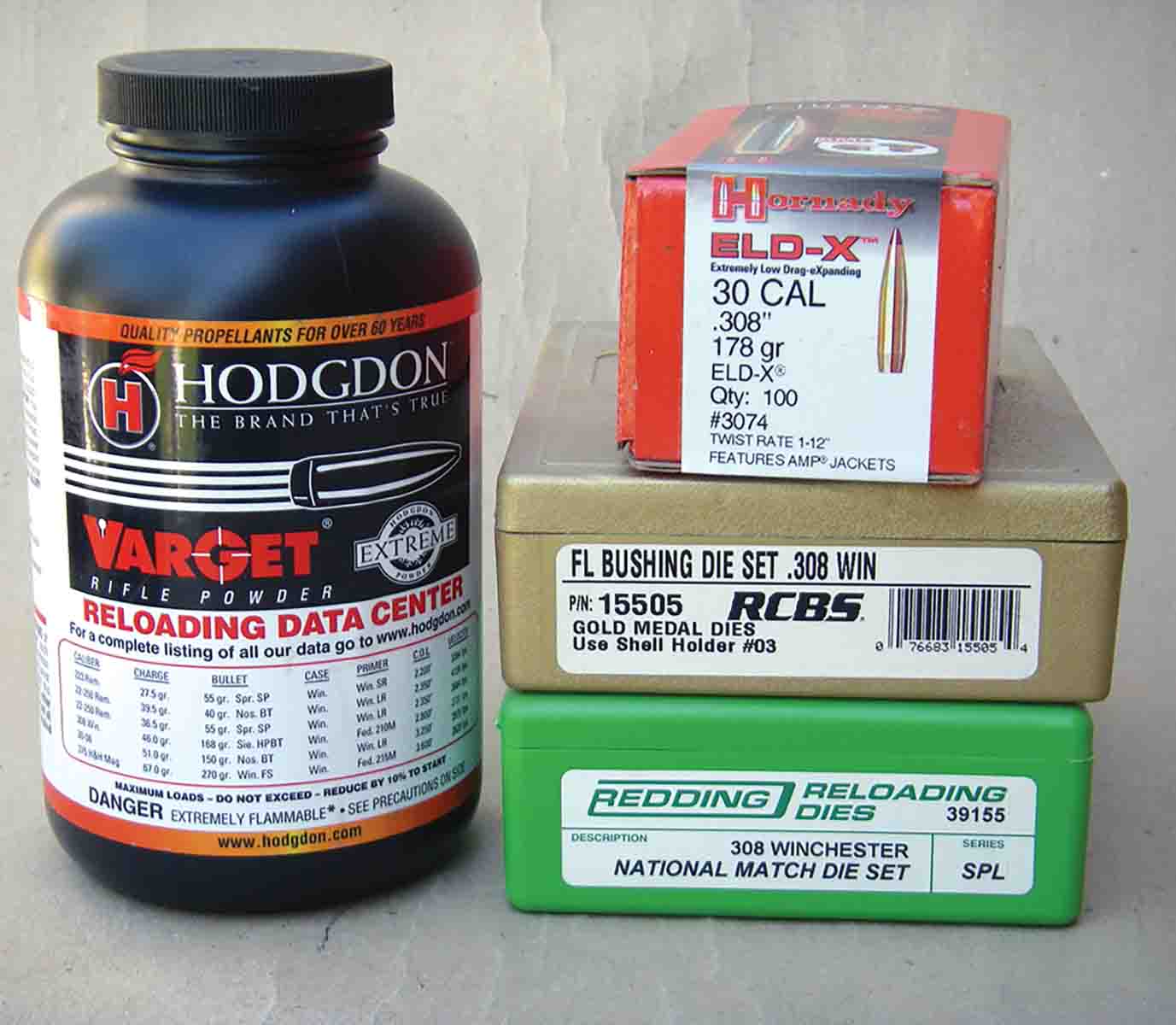
A: I suggest beginning with 40.0 grains and working up 1.0 grain at a time to around 43.0 to 43.5 grains, this charge probably being maximum. I would be checking each load increment for pressure, accuracy and record extreme spreads, as it is possible that your rifle’s accuracy “sweet” spot might be below maximum powder charges.


